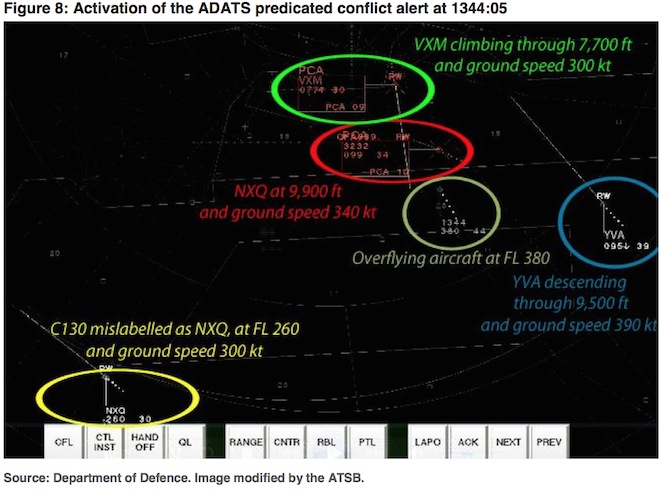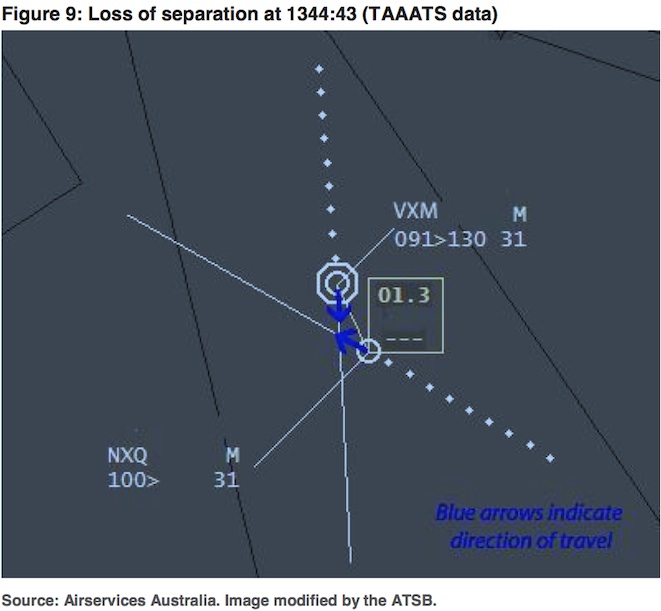
Air traffic controllers from the Department of Defence (DoD) do not receive adequate refresher courses in maintaining proper separation of aircraft, the Australian Transport Safety Bureau says.
The ATSB made the findings in a report concerning an incident on October 2 2012 when a Boeing 737-800 departing Darwin airport and a descending Boeing 717 on approach to land were with 900 vertical feet of each other. The minimum required standard was 1,000 feet vertical separation.
The incident activated a predicted conflict alert within the Australian Defence Air Traffic System (ADATS).
The ATSB report, released on Thursday, found Darwin air traffic control personnel “misinterpreted another aircraft as the 717 on their radar display”, a military C-130 Hercules flying from Richmond in Sydney’s north-west to Dili in Timor-Leste.
The ATSB report said an already-assigned transponder code was allocated to the 717, registration VH-NXQ, in ADATS, which resulted in the 717’s callsign being incorrectly correlated in ADATS to an overflying aircraft that was in the general proximity of the 717.
“Manual processes to check the assigned transponder code with the code listed in ADATS were not conducted effectively,” the ATSB said.
“Due to local contextual factors and confirmation bias, the Darwin Approach controller and Approach Supervisor assumed that the radar return labelled as NXQ was correct, and they did not identify the error until after the conflict alert activated.”


While the ATSB was satisfied the DoD had adequately addressed a number of safety issues, it was not satisfied on the matter of how air traffic controllers observed green track radar returns, which were for flightpaths with only limited data – the aircraft’s transponder code, transponder altitude and system calculated groundspeed.
“The ATSB is not satisfied that the DoD has adequately addressed the safety issues regarding the provision of refresher training to air traffic controllers for the scanning of green radar returns and in compromised separation recovery requirements and techniques,” the ATSB said.
“As a result, the ATSB has made formal recommendations to the DoD to take further safety action on these issues.”
The Department of Defence said the Air Force was “committed to maintaining a safe air traffic control service in military airspace and believes that cooperation with civil safety agencies ensures a high level of transparency when conducting air safety investigations”.
“The [ATSB] report … detailed three safety issues that Defence has addressed to ATSB’s satisfaction ahead of the release of this report. Air Force will continue to work with the ATSB to address the report recommendations,” Defence said in a statement.
A previous ATSB report, released in October 2013, found a higher rate of loss of separation (LOS) incidents at airports where air traffic control was administered by military air traffic services (ATS).
“Military ATS were involved in a disproportionate number of loss of separation occurrences involving civilian aircraft in terminal area airspace relative to the amount of traffic they control,” that ATSB report said.
“Military ATS are responsible for about 25 per cent of the aircraft movements in terminal areas, but were involved in 36 per cent of LOS occurrences in terminal areas.”
Defence in its October 2 statement pointed out that: “Air Force and civil air traffic controllers have common qualifications and apply the same standards and procedures.”
















